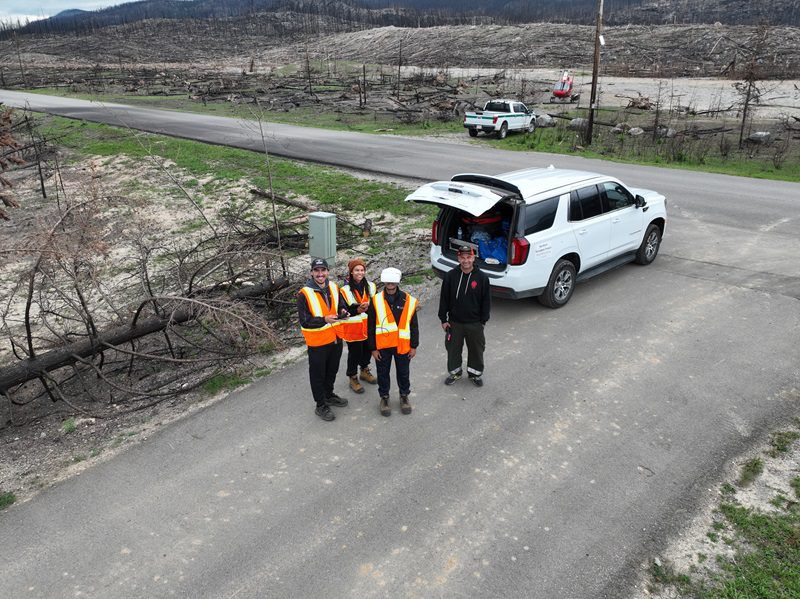‘It’s a very rare thing’: Did the Jasper wildfire create a tornado?

The Northern Tornadoes Project is working to confirm if the Jasper wildfire created one or more fire tornadoes in late July.
From Sept. 10-12, researchers from Western University in London, Ont. examined the wind damage at the Wabasso Campground in Jasper National Park.
“We haven’t confirmed yet that there were fire tornadoes that occurred in Jasper, but it’s a very strong possibility,” said Aaron Jaffe, an engineering researcher with the Northern Tornadoes Project who visited the site. “It’s such a new field of research that we want to take all the time we can to comb over the data and make sure before we make any big claims like that.”
A tornado is classified as a violently rotating column of air, but it must be in contact with both the ground and the clouds above. When very intense wildfires generate their own thunderstorm clouds, called pyrocumulonimbus clouds, they can create fire tornadoes in rare cases.
Jaffe said they know there were fire-generated severe winds that may have been over 100 km/h, and some of them had vortex patterns. Jaffe said a lack of video complicates their investigation, meaning they needed to rely on evidence such as radar and damage patterns on trees.
Jaffe noted the only other fire tornado they had previously investigated was one at Gun Lake, B.C. last year in August.
“Additionally, the Gun Lake fire tornado was the first confirmed fire tornado to be documented in Canada ever, and it’s a very rare thing,” he said. “There’s only been a handful of documented fire tornadoes around the world – a few in California, a few in Australia and not much else outside of that.”
The Northern Tornadoes Project focused on Wabasso Campground and the surrounding area because some of the worst tree damage occurred there. As well, since many debris are from manmade objects and structures, they know exactly where they originally were.
Researchers used drones to map out the area while also taking notes and photos on the ground. They are hoping to determine wind speeds based on tree-fall patterns and how far the wind carried debris.
“It was like nothing I’ve seen before,” Jaffe said. “Almost every single tree has been uprooted or snapped by the winds generated by the fire.”
He mentioned the winds had been strong enough to lift a 20-foot sea-can weighing 6,700 pounds from Wabasso Campground into the Athabasca River, more than 100 metres.
“These are all the types of things that you only see in very severe wind events,” he added. “It’s not your everyday tornado that causes that kind of stuff.”
Jaffe emphasized it could take months to determine if a tornado touched down during the Jasper fire.
“If this is just a regular wind event, we would already know right away,” he said. “Because we’ve only ever had one documented fire tornado in Canada ever, it’d be a really big deal if we had one – or several, possibly – fire tornados here.”
The Northern Tornadoes Project is ultimately trying to better understand the risks of fire-induced wind and where this phenomenon may occur again.
“Fire experts know that wildfires are becoming increasingly common and intense because of climate change, and so it’s pretty reasonable to assume that more wildfires are going to create more environments for potential fire tornadoes,” Jaffe said.
Photo Credit: The Northern Tornadoes Project visited Wabasso Campground in Jasper National Park from Sept. 10 to 12. Pictured, researchers with Parks Canada staff. Northern Tornadoes Project (image obtained from The Canadian Press).



